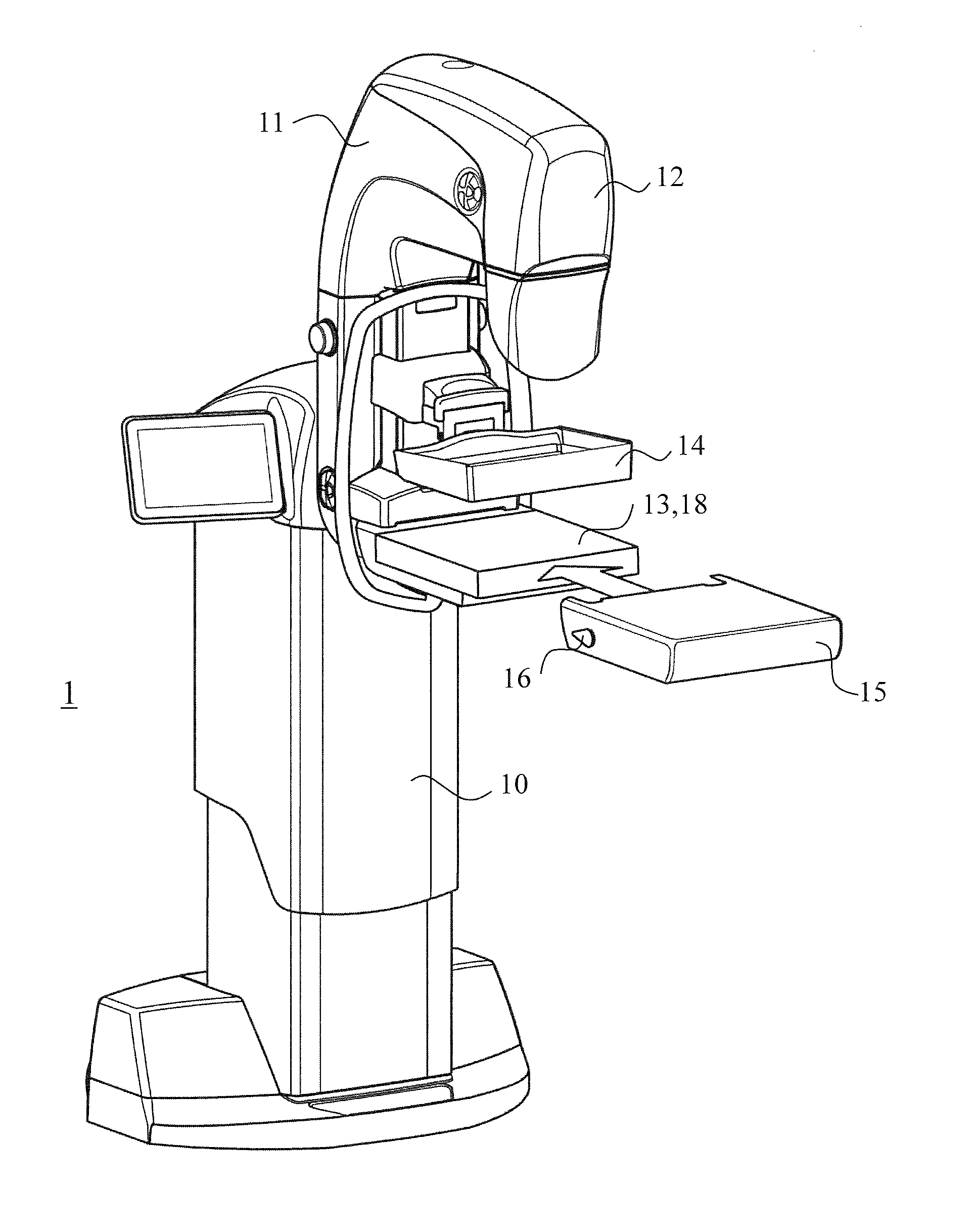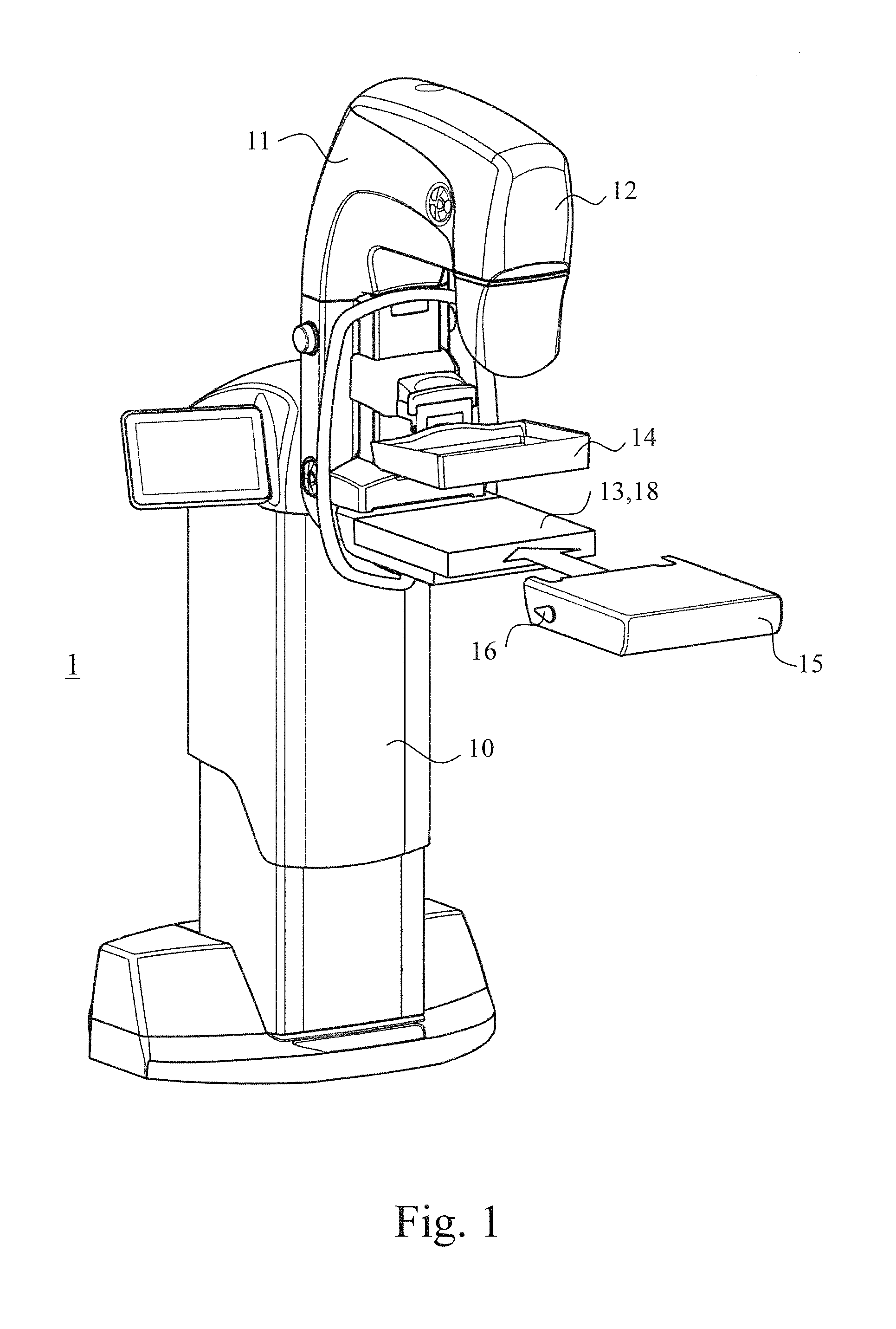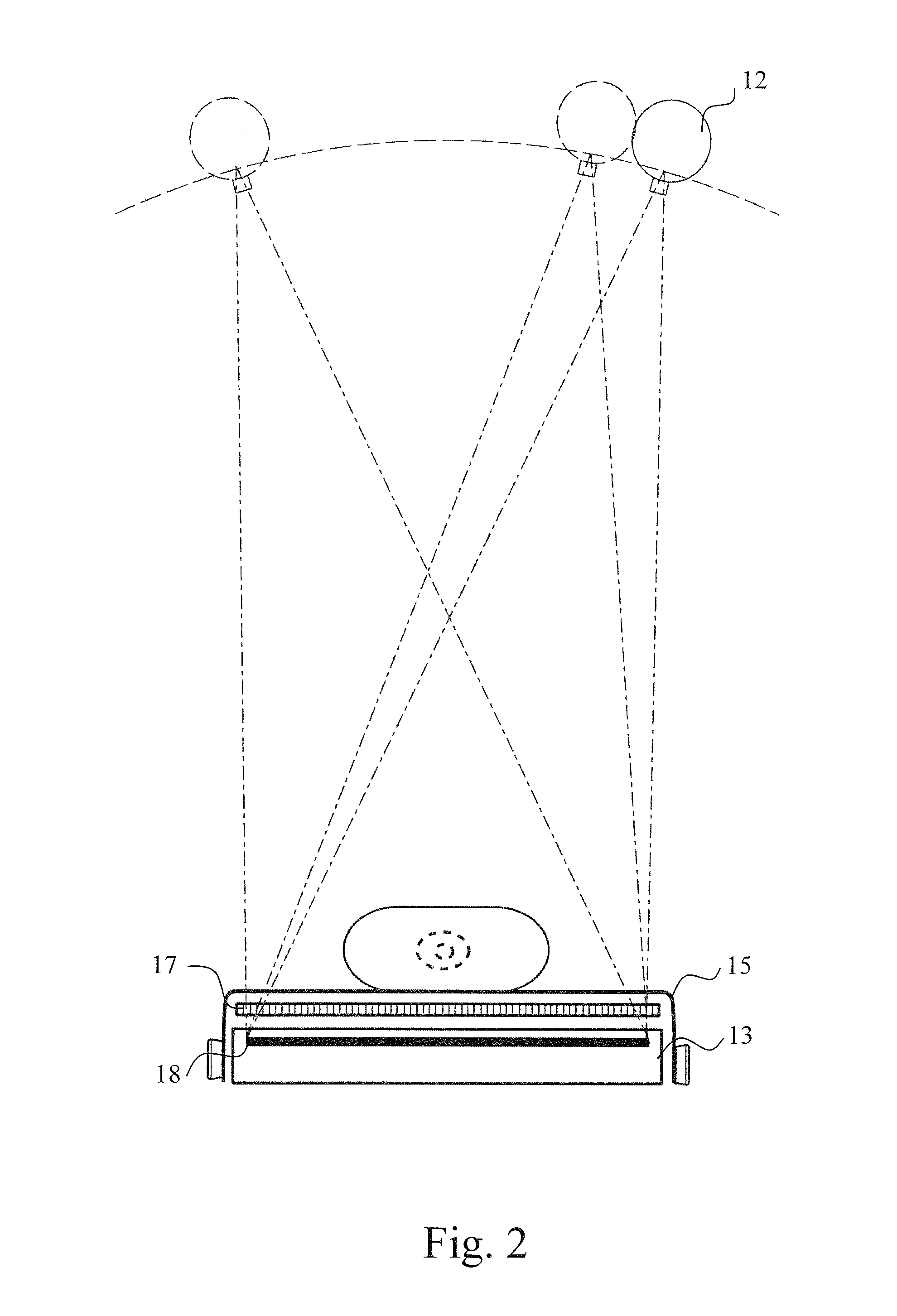Mammography imaging arrangement for tomosynthesis
a mammography and imaging arrangement technology, applied in the field of tomosynthesis process, can solve the problems of affecting the overall time needed for imaging procedures like this, and affecting the recovery of patients, etc., and achieves the effect of simple updating of conventional mammography apparatuses
- Summary
- Abstract
- Description
- Claims
- Application Information
AI Technical Summary
Benefits of technology
Problems solved by technology
Method used
Image
Examples
Embodiment Construction
[0027]FIGS. 1-3 show typical constructions of a mammography apparatus. The mammography apparatus (1) of FIG. 1 consists of a frame part (10) and a C-arm (11) (more commonly an arm structure (11)) attached to it. In the top part of the C-arm (11) inside its coven is arranged a source of radiation (12) which is arranged to generate a beam, which passes through an upper compression plate (14) of the mammography apparatus (when such an upper compression plate is attached to the apparatus) and towards a detector (18) positioned in a detector housing (13). The detector housing (13) or a corresponding structure is typically arranged inside a lower tray structure (15), into connection with which lower tray structure (15) can be integrated a grid structure (17) which absorbs radiation scattering from the object being imaged. The lower tray structure (15) can be a fixed structure in the apparatus or it can be arranged detachably connected. As the top surface of the lower tray structure (15) t...
PUM
 Login to View More
Login to View More Abstract
Description
Claims
Application Information
 Login to View More
Login to View More - R&D
- Intellectual Property
- Life Sciences
- Materials
- Tech Scout
- Unparalleled Data Quality
- Higher Quality Content
- 60% Fewer Hallucinations
Browse by: Latest US Patents, China's latest patents, Technical Efficacy Thesaurus, Application Domain, Technology Topic, Popular Technical Reports.
© 2025 PatSnap. All rights reserved.Legal|Privacy policy|Modern Slavery Act Transparency Statement|Sitemap|About US| Contact US: help@patsnap.com



